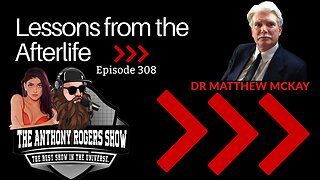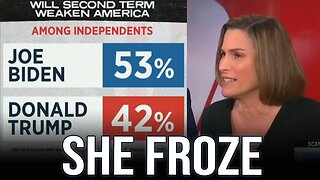Our Dollar is Worth Whaaaat? | The Gold Standard 2416
https://www.midasgoldgroup.com/
Welcome to the latest episode of The Gold Standard, where we take a current look at the world of precious metals and economic insights. In this episode, join our esteemed hostess Jennifer Horn and Ken Russo, SVP of Midas Gold Group, as they unravel the mysteries behind our current economic landscape in the captivating discussion, “Our Dollar is Worth Whaaaat?”
Together, Jennifer and Ken delve into the pivotal events that have shaped our economy, shedding light on the intricate details that often go unnoticed. They bring to the forefront the Nixon Shock of 1971, a momentous turning point in economic history that continues reverberating through our financial systems today. Discover why understanding this historical event is crucial for anyone navigating the complexities of modern finance. Join us for an enlightening and thought-provoking conversation that promises to expand your understanding of our monetary world and its impact on your finances. Tune in to The Gold Standard and stay ahead of the curve with valuable analysis and actionable insights.
In 1971, President Nixon’s decision to disconnect the dollar from gold marked a pivotal moment in economic history, shifting our currency to a fiat system backed by trust in the government. This move triggered a significant devaluation of the dollar, leading to widespread inflation and higher costs across the economy, impacting individuals and businesses alike. The aftermath of the Nixon Shock reshaped investment patterns, with a focus on protecting wealth through hard assets like commodities rather than fostering innovation and productivity growth. Understanding the implications of this event is crucial for comprehending modern economic dynamics, including the relationship between currency policies, inflation, investment choices, and long-term economic resilience.
The decision to abandon the Bretton Woods Agreement in 1971 stemmed from a culmination of economic factors and geopolitical shifts. The fixed exchange rate system established under Bretton Woods, where currencies were pegged to the US dollar, became increasingly untenable as economic realities diverged from the pegged values. The massive costs of the Vietnam War and domestic spending led to an unsustainable imbalance in the US balance of payments, putting pressure on the dollar’s convertibility to gold at the agreed-upon rate. This, coupled with growing international demand for gold and concerns about the US’s ability to maintain the gold standard, prompted the Nixon administration to reevaluate the country’s monetary policy. The decision to renege on Bretton Woods was a pragmatic response to economic challenges, signaling a shift towards a more flexible, albeit riskier, floating exchange rate system that allowed currencies to fluctuate based on market forces rather than fixed pegs.
The formation of the Federal Reserve in 1913 was not solely President Woodrow Wilson’s idea but rather a response to longstanding concerns about banking instability and the need for a central banking system. Wilson supported the creation of the Federal Reserve to address issues such as financial panics, currency shortages, and lack of a cohesive monetary policy. The Federal Reserve Act of 1913 aimed to provide a more stable and flexible monetary framework, with a central bank empowered to regulate the money supply, set interest rates, and oversee the banking system.
In 1933, President Franklin D. Roosevelt took drastic measures to address the economic crisis by issuing Executive Order 6102, which made it illegal for US citizens to own gold coins, gold bullion, or gold certificates. This move was part of broader efforts to stabilize the economy during the Great Depression, as Roosevelt sought to control the flow of gold and bolster confidence in the US dollar. The confiscation of gold, coupled with subsequent devaluations and policy shifts, marked significant milestones in US monetary history and shaped the trajectory of economic policies for decades to come.
“Gold is not a way to get rich; it is a way not to be poor.”
—Bill Bonner, author, & Founder of Agora Financial
As inflation persists without signs of abating, concerns about the accuracy of government-reported inflation figures have intensified. The reluctance of other countries to invest in US debt, opting instead to accumulate gold reserves, underscores a global shift in economic strategies amid uncertainty. In such times, prioritizing wealth preservation becomes paramount, emphasizing the importance of diversified investment portfolios and hedging strategies to navigate volatile financial landscapes and safeguard long-term financial security.
______________________________________________________________________________________________
Listen to The Gold Standard: https://www.midasgoldgroup.com/gold-standard-radio-show/
Gold IRA: https://www.midasgoldgroup.com/gold-ira/
Invest in Gold: https://www.midasgoldgroup.com/buy-gold/
Guide to Owning Bullion & Coins: https://www.midasgoldgroup.com/bullion-guide/
Read the latest precious metals news: https://www.midasgoldgroup.com/news/
-
 25:07
25:07
Midas Gold Group
1 month agoMore Deficit Spending | The Gold Standard 2411
78 -
 LIVE
LIVE
Precision Rifle Network
8 hours agoRex & Joel Live S2E3
1,168 watching -
 LIVE
LIVE
The Anthony Rogers Show
12 hours agoEpisode 308 - Lessons from the Afterlife
38 watching -
 0:56
0:56
Memology 101
11 hours agoMSNBC "finds it SHOCKING" that voters believe Biden is a GREATER THREAT to democracy than Trump
4.75K32 -
 1:13:28
1:13:28
The Charlie Kirk Show
2 hours agoTHOUGHTCRIME Ep. 44 — Mud-Faced Millionaires? Trump Jail = Good? The Unfunny Left?
27.1K18 -
 1:53:30
1:53:30
Kim Iversen
5 hours agoBiden Confronts "Genocide Joe" Nickname, Ann Coulter Tells Vivek To His Face Only Whites Should Be President, The Great Taking w/ Chris Martenson
21.4K60 -
 1:44
1:44
Rebel News
5 hours agoLAST CHANCE! Tickets are almost sold out for Rumble Live and Rebel News Live!
18.9K10 -
 1:01:20
1:01:20
The StoneZONE with Roger Stone
8 hours agoJFK Murder Re-Examined. Shot From Front And Back = Conspiracy! The StoneZONE w/ Roger Stone
13.4K11 -
 1:08:00
1:08:00
TheMonicaCrowleyPodcast
8 hours agoReal Collusion with Benny Johnson
11.8K6 -
 1:38:38
1:38:38
OFFICIAL Jovan Hutton Pulitzer Rumble
3 hours agoKamala Clones! They Exist! Or At Least They All Went To The Same Political Prep School
14.7K3